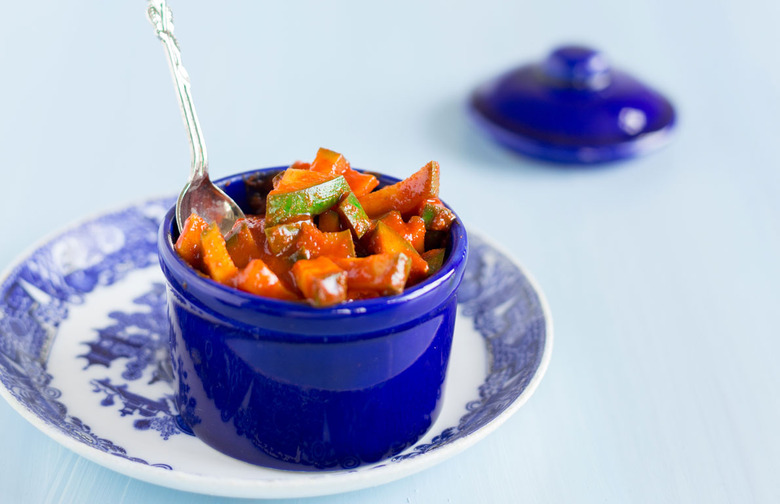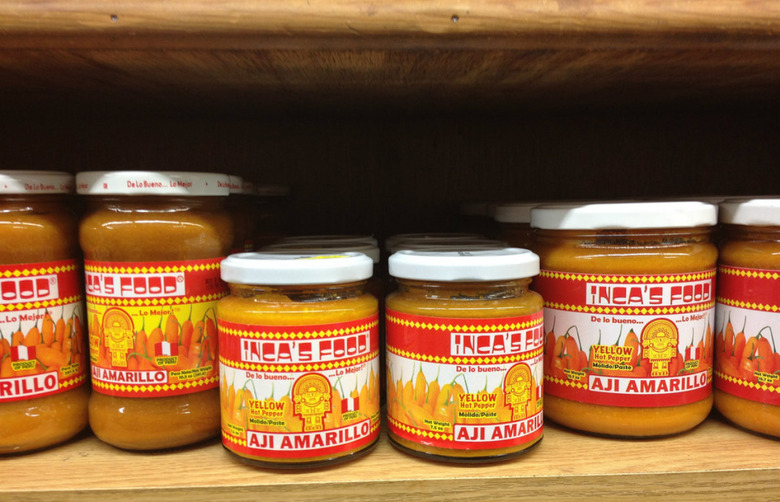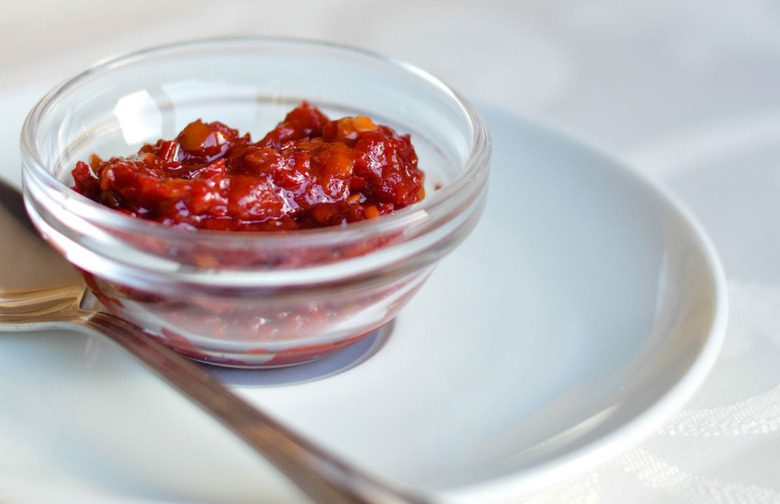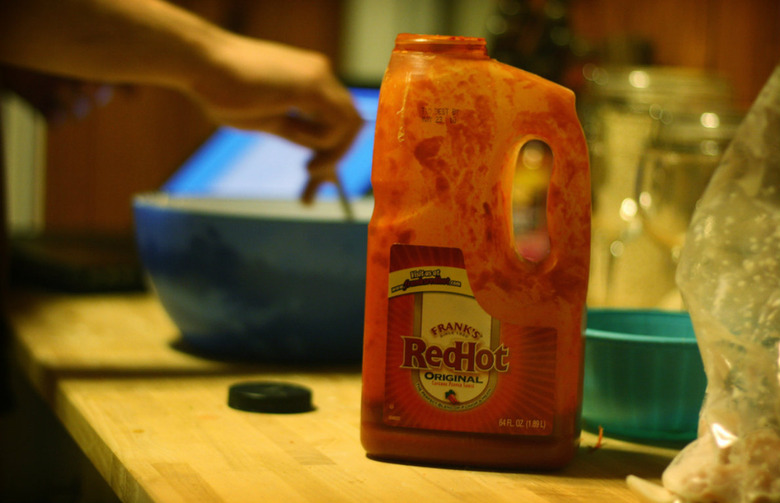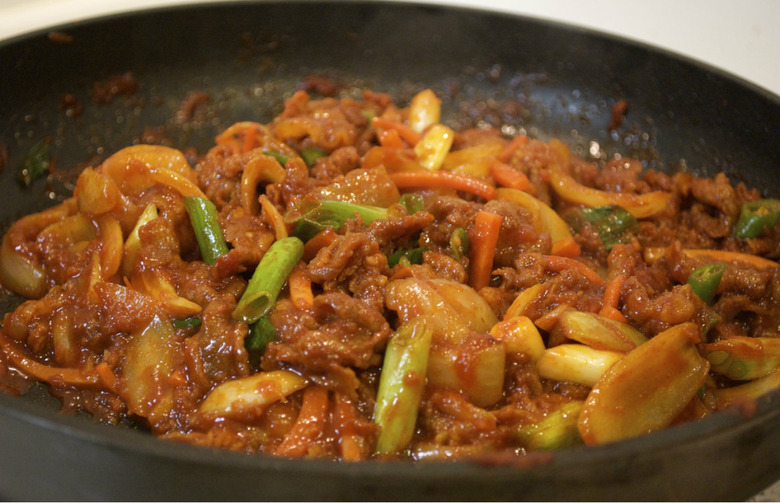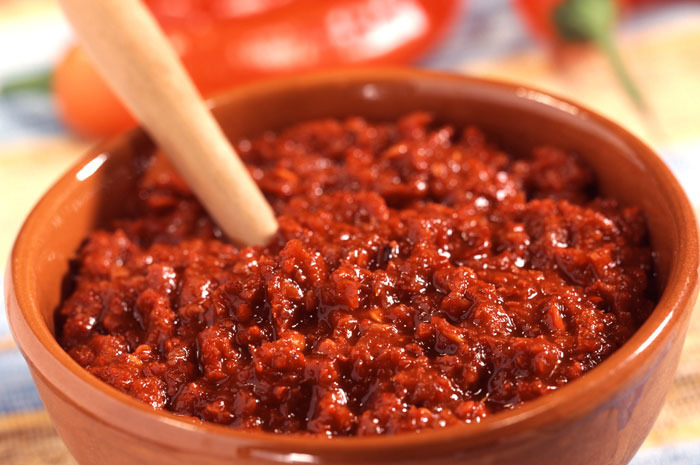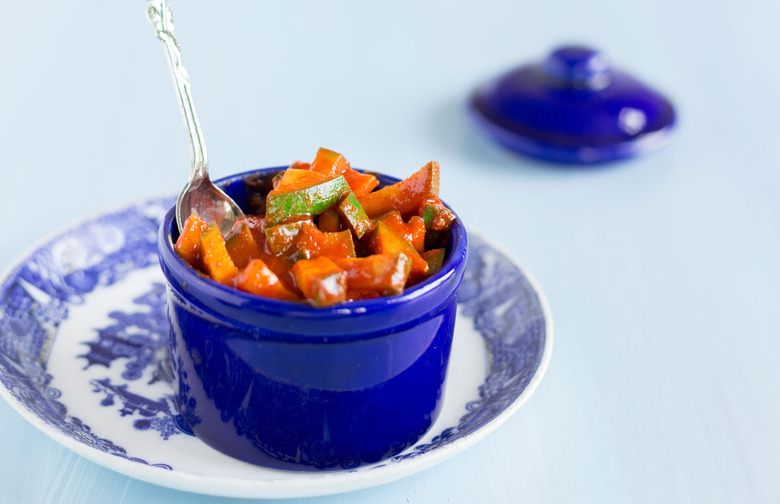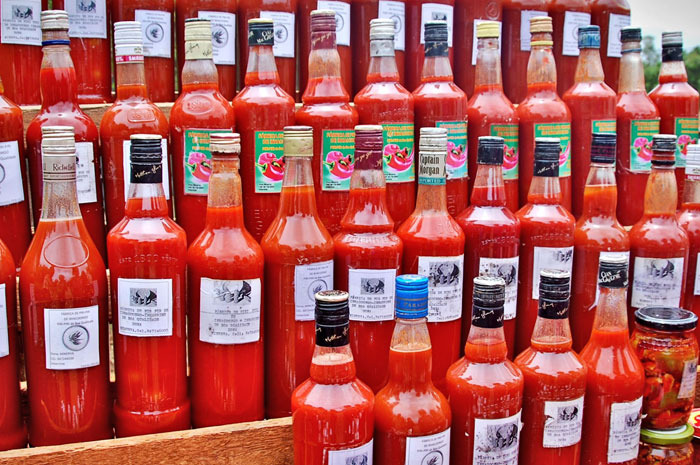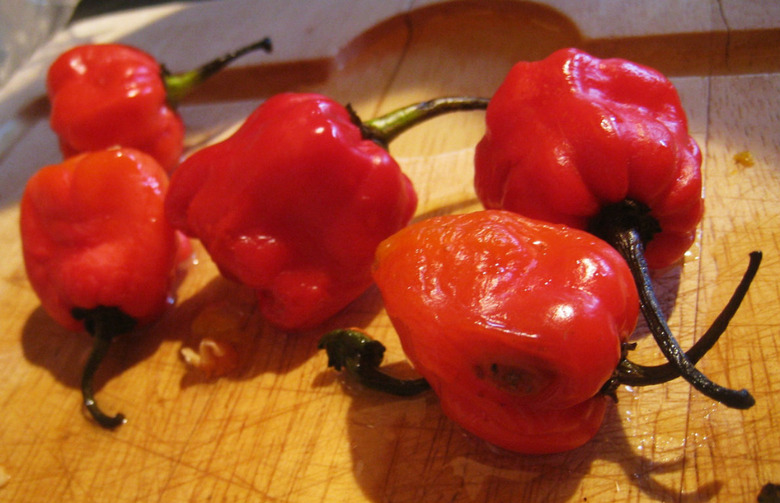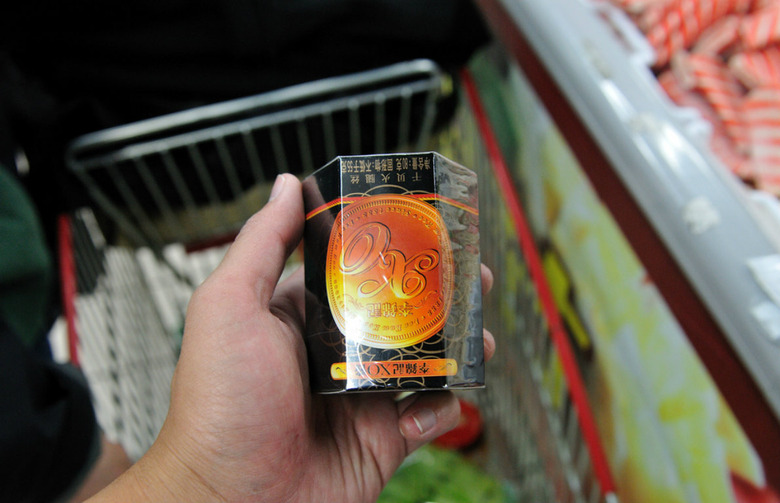Around The World In 9 Hot Sauces
When most people think of hot sauce, they think spiciness. Of course, they are not wrong, but around the world, all different kinds of chiles — and other ingredients — go into the creation of the overall taste sensation we call spice. As a result, there are many iterations of hot sauce all around the world. Here are 9 of them.
Aji Amarillo Paste (Peru)
The bright orange aji amarillo pepper (and its pastes, sauces, and powders) have been a part of Peruvian cuisine since the Incan Empire. It translates to "yellow chile" because, when cooked, that's the color it becomes. It is distinctive for its fruity taste, which comes through despite its strong punch of spice. Combined with cilantro and onion, this chile makes one of the most ubiquitous flavor combinations in Peruvian cuisine.
Erős Pista (Hungary)
This branded sauce from Hungary, which translates to "Strong Steve," is composed of a simple combination of paprika and salt. According to travel guide writer Rick Steves, Hungarians usually cook with sweet paprika, but keep hot paprika on the table, so each diner can customize the spiciness of a dish to his or her taste. Erős Pista is an even spicier version of your standard table paprika. According to Steves, "It is best used sparingly."
Frank's RedHot (USA)
Cayenne peppers are the base of Frank's RedHot, which also contains vinegar and garlic. It gained its place in the American culinary cannon by being the primary ingredient in the original Buffalo wing sauce at Anchor Bar in Buffalo, New York — where the iconic American food was invented.
Gochujang (Korea)
Almost no Korean dish is presented without the option of gochujang, which is made from red chiles, glutinous rice, fermented soybeans, and salt. Traditionally, the paste is aged and fermented in large clay pots under the influence of natural sunlight. Sunchang Traditional Gochujang Village, on the outskirts of the city of Gwangju, is one of the most popular tourist destinations in South Korea.
Harissa (Tunisia)
The hot sauce most associated with the North Africa and Middle East, harissa originated in Tunisia and is a paste made of a blend of various hot chiles, which are either roasted or smoked, along with garlic, olive oil, and spices like cumin, coriander, caraway or mint. One way to make harissa truly unique is to add rose petals or rose water, as they do in some parts of North Africa.
Mango Pickle (India)
The mango pickles of India vary — for example, in Gujarat, they make them sweet. However, the standard mango pickle (or aachar) you'll find at any Indian store consists of raw, young mangos fermented with salt, vegetable oil, and various spices, including chiles. While mango pickle is most popular, other pickles with similar spices include spinach, tamarind, and lime.
Piri Piri (Portugal and Mozambique)
Piri piri sauce, or African bird's eye chile sauce, originated in Portugal and became very popular in the Portuguese colony of Mozambique. Piri piri means "pepper pepper" in Swahili. The sauce has a slightly citrus-y flavor due to the addition of lemon or lemon rind.
Scotch Bonnet Pepper Sauce (The Caribbean)
This yellow chile sauce actually gets its name from a Robert Burns poem. Sort of. It is named after the tam o' shanter, a hat worn by Scottish men in the nineteenth century, and the hat is in turn named after a Robert Burns poem. Nevertheless, it's fitting: this hot sauce is poetic in taste. It is both sweet and spicy, but don't let that fool you into thinking you can add an extra few spoonfuls to your dish. The chiles have a whoping 100,000 to 350,000 Scoville units — the hottest jalapeño peppers hit just 8,000 Scoville units.
XO Sauce (Hong Kong)
This version of garlicky Chinese chile oil is made more interesting by the addition of dried seafood (fish, shrimp, and scallop). Though it contains no cognac, it is named after the brandy: extra-old (XO) cognac is a luxury item in Hong Kong, and the term "XO" grew to become popular slang for anything considered chic. You can visit the restaurant where the sauce was allegedly invented: Spring Moon at the Peninsula Hotel in Hong Kong.
